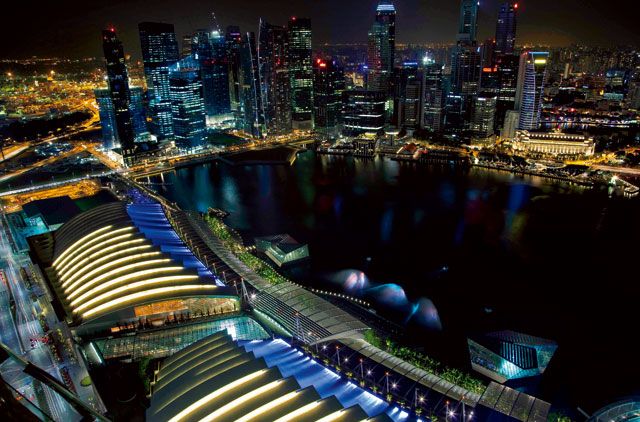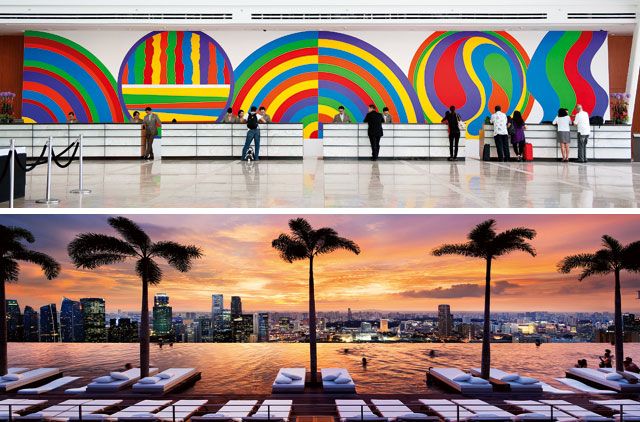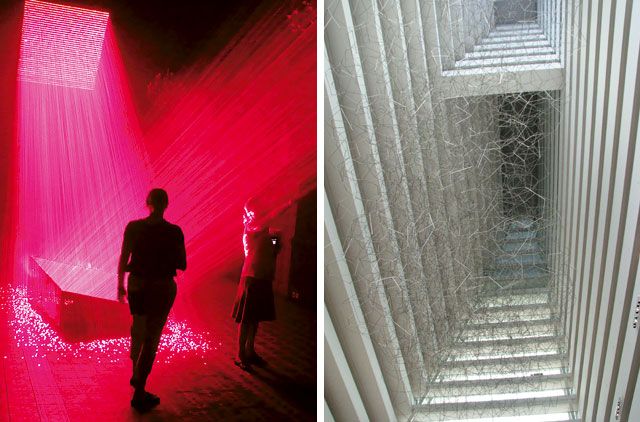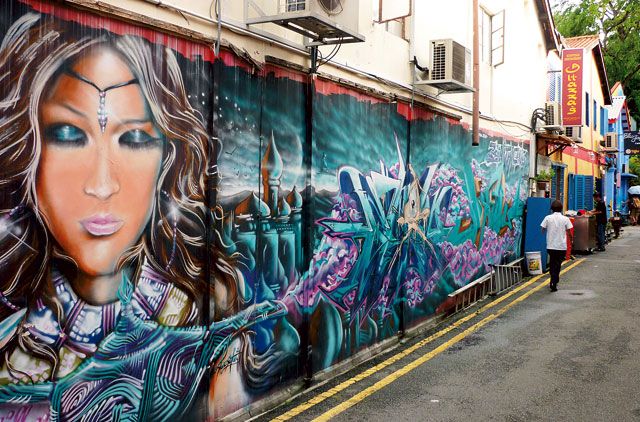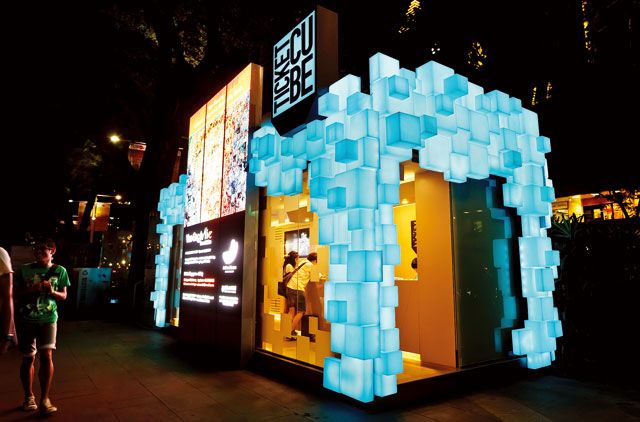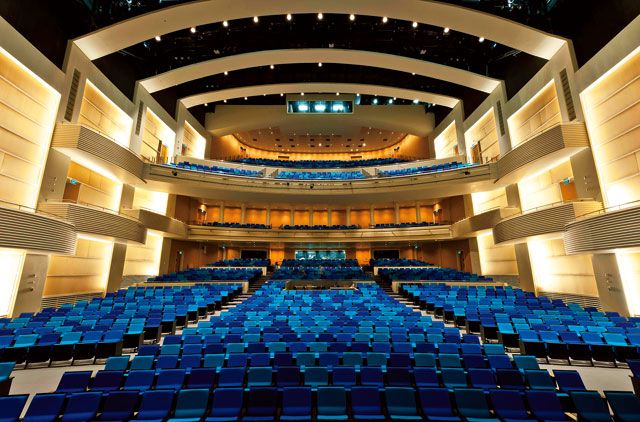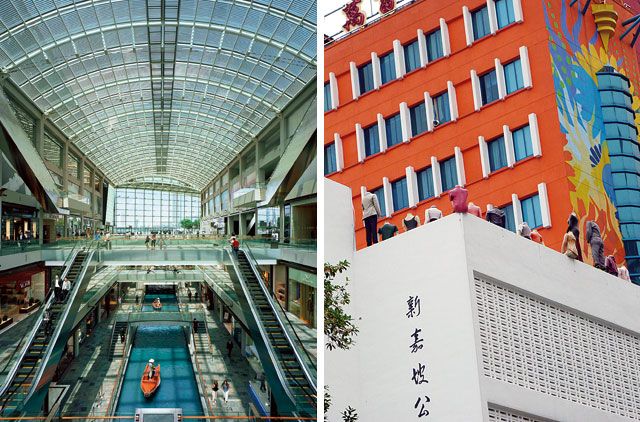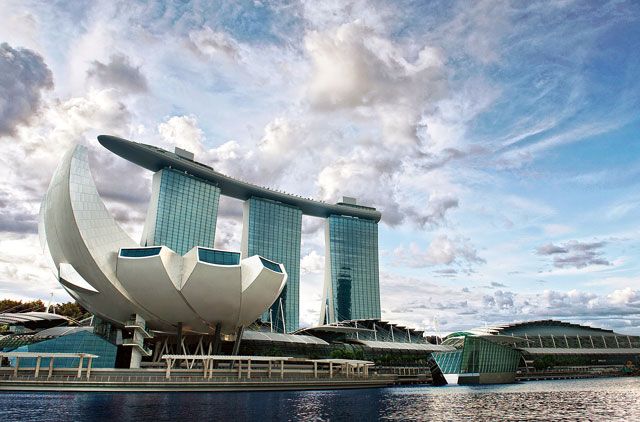At Dubai International Airport waiting to board a flight to Singapore, I ran into an old colleague who's jumped the fence into PR. "Ah, off to lovely Singapore, eh?" he said enviously. "What's on the itinerary?" I reeled off the list: Singapore Art Museum (SAM), Helu-Trans Gallery, Art Plural, National Museum of Singapore… "Whoa!" he broke in. "What's this, an art trip?"
Yes, I nodded. "Are you crazy?!" he replied, incredulous.
There's a reason for his reaction. When it comes to business, Singapore ranks among the top on international indices for competitiveness, but when it comes to culture, the island-state is far from being a match for its global rivals.
A report published by Singapore's government-appointed Economic Strategies Committee stated last year that, "While we have attained First-World standards in business and livability, we are still lagging global city standards for culture. Our cultural sector is still falling behind those of cities like London, Paris, New York, and Tokyo. To be a player in the league of top global cities, we need to make significant investments in our cultural capital and landscape." The report concluded that establishing Singapore as "a leading cultural capital'' should be a priority for the next decade.
Art attack
Singapore has launched an artistic offensive, having spent $1.5 billion on cultural projects that include a National Art Gallery and the Esplanade performance complex. Art Stage Singapore - a new international art fair - was launched last year, with the ambitious goal of growing "into one of the top events in the world'' within six years, the fair's Swiss director, Lorenzo Rudolf, said at the time. And, with more than 100 art galleries already listed, Singapore is well-placed to promote itself as an art destination, despite many people's preconceptions.
"Art can cross boundaries," says Benjamin Milton Hampe, director of Chan Hampe Galleries at the iconic Raffles Hotel, which recently held an exhibition of paintings by Burmese artist Aung Kyaw Htet. "Travelling can be more than just sightseeing. Imagine you are an art enthusiast; with such a wealth of art we can allow a glimpse into the art scene not only in this part of the world, but the whole of Southeast Asia."
He's not wrong, we realise, as we survey the ultra-realistic art works of Aung, which have an almost photographic quality to them. The young, enigmatic monks and nuns are portrayed with a delicate dignity in the Illuminations series, and speak of the influence of Buddhism in his poverty-stricken country.
Gallerists from the smattering of art galleries we visit over the course of our four-day tour echo Benjamin. "For an art enthusiast, it's no longer sufficient to be aware of just their own art scene," says Frederic de Senarclens, CEO of Art Plural Gallery. "People are looking to educate themselves on art practices around the world. We are quite crucial to them in this venture."
Gallery sightseeing
Our art education begins at the hotel we stay in - Grand Hyatt Singapore. Its new exhibition and conference space, called The Gallery, is a first-of-its-kind concept in Singapore, says Patricia Yong, marketing communications manager of the hotel. The Gallery comprises an all-encompassing space housing a loft kitchen, a lounge, two ateliers and salons, which have the versatility for a completely exclusive and private event. "There are exclusive art collections showcased throughout the ateliers and salons. The Gallery can accommodate both corporate meetings and social galas, from large meetings to intimate weddings and everything in between."
Next stop, Singapore Art Museum (SAM), which was hosting ‘Future Proof', an art fair of sorts that Davis Chew, one of the curators of the show, says is "a critical broadening of perspective." With its mix of traditional art, installations and performance art (which included videos), ‘Future Proof' lends a new dimension to the art show as we know it. "Traditional art fairs show a preference for spectacle and statement-making art," says Davis. "With this show, we want to surprise, and stimulate debate about the state and future of contemporary art in Singapore."
Prior to our visit, Davis took a group of art enthusiasts around the show. "I was surprised to learn that there is much awareness about different cultures in Southeast Asia, but not much information on the contemporary art scene," he says. "During the group's excursions to private collections and interactions with art scholars, they got to see how elements of religious iconography make their way into a work of art, and then how one lives with it in their homes."
Enticing tourists
While the local population is the primary audience for this art explosion, the Singapore Tourism Board (STB) is targeting tourists as well. TicketCube is an event concierge service that STB launched last year. A one-stop shop for browsing all the art and entertainment events being staged in Singapore, concierge officers assist with information, and recommend shows based on individual tourists' tastes. You can buy tickets and even plan your trip to the venue from there. "Visitors and Singaporeans are spoilt for choice with the art and entertainment offerings available," says Aw Kah Peng, STB chief executive. "We have over 30,000 art events in a year, so TicketCube is always buzzing."
It certainly was when we picked up tickets for the long-running Broadway musical, Wicked. That led us to another development on the art front: the Marina Bay Sands development. It is the largest hotel in Singapore with over 2,500 rooms and suites, with the magnificent Sands SkyPark, which sits atop the three hotel towers, a 1.2-hectare tropical oasis (250 tree and 650 plants) that claims it can park four-and-a-half A380 jumbo jets! A ticketed public observation deck, from where you can see across almost the entire breadth of the country, sits beside a huge infinity pool that looks as if you could topple over the edge any moment and was crowded when we visited.
But more than the interesting artistic installation displays in the lobby, the Marina Bay Sands' contribution to art is the ArtScience Museum in the hotel. It has permanent exhibits on three floors of gallery space spread across 6,000 square metres. There are 21 galleries in all. The ArtScience Gallery at the museum showcases creativity across three spaces titled Curiosity, Inspiration and Expression. The exhibits in each - which run through all the wonders of art and science including Leonardo da Vinci's Flying Machine and ancient Chinese scrolls - may inspire viewers, and for such people there are interactive stations, where you can create your own unique design project, which can be shared via email with friends, or even on Facebook. There's also the Next Wall at the exit where you'll find your creation projected on a large media canvas, along with other works.
At the time the museum itself was hosting a travelling exhibition, Titanic: The Artifact Exhibition. A huge, sprawling affair that uses actual pieces of the ship recovered from the wreck, with life-size depictions of key portions of the Titanic, the exhibition was awe-inspiring.
The Marina Bay Sands Theatres, where we watched the production of Wicked, is truly world class, having staged many other Broadway musicals such as The Lion King.
But out on the Marina, on the corniche where the hotel stands, was the truly inspiring art. Billed as "Asia's first and only sustainable light art festival", the ‘i Light Marina Bay 2012', which ran from March 9 to April 1, featured a collection of inventive creations from diverse artists and included installations, video and audio. Flow by Singaporean artist Olivia Lee, even featured a series of vertical axis wind turbines made from discarded plastic water cans that harnesses wind energy to generate light.
Talking business
After soaking in all that art, it was time for a bit of hard reality. The next day we visited the Singapore FreePort, where art of all kind, and other precious material is stored. As well as spending big on the arts, Singapore offers tax incentives to promote the country as a cultural hub. The Singapore FreePort provides a tax-free, state-of-the-art storage and display facility for fine arts, collectibles, and other valuables.
Managed by a private company, whose shareholders include the Singapore National Arts Council and the National Heritage Board, the facility near Changi Airport offers storage space "the size of six football fields" in its first phase, according to Lincoln Ng Y C, general manager of Singapore FreePort. It's Mission Impossible time when you step inside, with body searches, temperature-sensitive environments, huge steel walls and blank faces that reveal nothing. "We can't tell you anything about our clients, or the rents, or what we safeguard," says Lincoln. The only thing he will let on is that one of the main tenants is the international auction house Christie's, which closed its Singapore auction business in 2002. It's obvious that they are sitting on top of billions of dollars.
That could be the reason the government is pushing a National Art Gallery, slated to open by 2013 in two heritage buildings, the City Hall and the former Supreme Court. "The future is art," declares Davis.
For the artistically inclined visitor, Singapore could be pure heaven in more ways than one.


